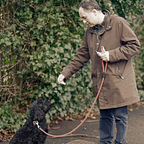A Brief History of Dog Sledding
Although an exact date is uncertain, it can be said that dog sledding as a human activity dates back at least 1,000 years. Some antiquarians suggest it was the indigenous Thule culture that first began using dogs to pull sleds. The Thule lived along the coasts of Alaska and the northern regions of Canada.
Archaeologists have found what are believed to be the oldest dog harnesses fashioned from seal skins and sleds made from driftwood and using whalebone as runners.
Another possibility is that dog sledding was developed on the other side of the world in Siberia. The practice is mentioned in Arab literature dated to the 10th Century. Marco Polo mentioned the subject in his travel writings of the 13th Century. Perhaps the earliest-known drawing of a dog pulling a load is found in the book Historic Navigations by Martin Frobisher . It was published in 1675.
When European explorers arrived in the New World, they quickly recognized the value of using dogs to haul stuff on sleds. Traders used them to carry supplies into the wilderness and to return with loads of furs and pelts. The average settlers of Canada routinely used dogs as dray animals, most especially to haul wood. Finnish traveler and scientist , who traveled in Quebec in 1795, noted the use of sled dogs by common people and called them “the horses of the poor.”
There is voluminous information about how dog sleds were vital components for military application and use in commerce and trade through the 17th, 18th, and 19th centuries — but now let’s jump forward to the late 1890s and the start of the Alaska Gold Rush.
Prospectors arrived by the thousands in the Alaskan coastal towns of Seward and Knik. They then needed to travel long distances across frozen landscapes to find sources of gold. The best way to do this was using dog sleds to ride and carry supplies. In this way, they developed the now-famous Iditarod Trail — which had actually been a pathway by Alaskan natives for at least 3,000 years.
The Gold Rush petered out in just a few years, but it had the effect of creating communities and establishing the Iditarod as a major access trail. Dog sleds continue to be important for hauling supplies up and down the trail before modern vehicles, especially airplanes and “iron dogs” — snowmobiles — made them obsolete.
The tradition of dog sledding lives on today in the world-renowned Iditarod Trail Sled Dog Race . The nearly 1,000-mile race is run every March from Anchorage to Nome.
Originally published at https://michaelwolkindqc.org.uk.
